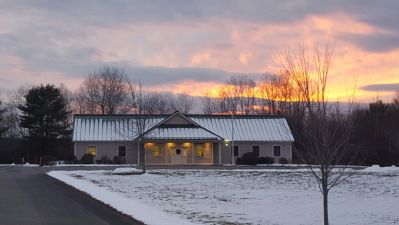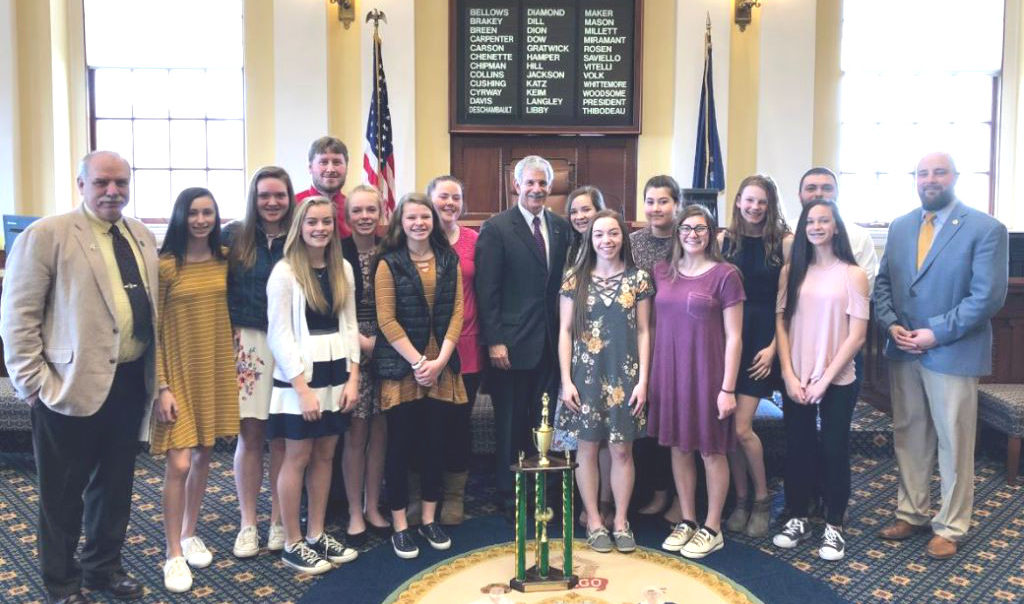I’m not talking about Martha Stewart etiquette here. I’m talking about house mice that come in uninvited and overstay their welcome. I dealt with mice at camp last summer when I trapped 13 during the season, and I am in a constant battle to keep them out.
Now, I’m dealing with them in my house. My wife and I have lived in our present location in Waterville for 42 years, and never encountered a mouse – until this past weekend.
While rearranging the cellar way where I keep a vegetable bin, a compost bucket and a sundry of cleaning materials, I noticed a bag of grass seed that had been invaded, with the ever-present mouse droppings everywhere. I managed to trap one on each of Saturday and Sunday. The trap was empty Monday morning. Maybe that was it. We’ll see.
They could be either a house mouse, field mouse or meadow vole.
A small mammal, although a wild animal, the meadow vole, Microtus pennsylvanicus, sometimes called a field mouse, are active year round.
A lot of people confuse the field mouse with house mice. They are a little different. A house mouse in uniformly brown-gray, right down to the tail. They typically have small hands and feet with big eyes and ears. And if you have a house mouse, you will know it because of its strong smell.
The field mouse has sandy brown fur and a white to gray belly. A cautious mouse which always sniffs anything unfamiliar before approaching, this mouse does not have a very strong smell. Which, obviously, is why I didn’t know we had mice in the house. There was no odor. The mice I have been catching also have white bellies.
The meadow vole has the widest distribution of any North American species. It ranges from Labrador west to Alaska and south from Labrador and New Brunswick to South Carolina all the way west to Wyoming. They are also found in Washington, Idaho and Utah.
Meadow voles have to eat frequently, and their active periods are associated with food digestion. They have no clear 24-hour rhythm in many areas.

Left, house mouse; center, field mouse; right, meadow vole.
Contrary to what you see in the cartoons, mice do not like cheese. They actually like to eat fruits, seeds and grains. They are omnivorous, which means they eat both plants and meat. The common house mouse will eat just about anything it can find. In fact, if food is scarce, they will eat each other. (I bait my traps with peanut butter – works every time!) They have voracious appetites, and usually build their nests near places that have readily accessible food sources.
Male mice are usually ready to mate after six to eight weeks. One captive female produced 17 litters in one year for a total of 83 young. One of her young produced 13 litters (totaling 78 young) before she was a year old.
But, I’m not completely convinced we have meadow voles. They could be house mice or field mice. They seem to have those characteristics. I thought they might be house mice because they are more adaptable to humans than meadow voles. But, again, we didn’t get the strong odor from a house mouse, and the mice I’m catching have a white belly, which the field mouse has, and not the house mouse. The meadow vole doesn’t usually enter homes, but rather prefers dense, gassy areas, and winters under the snow near some natural formation such as a rock or log.
The house mouse, Mus musculus, originally came from Asia, colonizing in new continents with the movement of people. Either of the three species can transmit diseases, though not on the same scale as rats.
The house mouse lives more comfortably with humans, while field mice, Apodemus sylvaticus, prefer to live underground, although they will, from time to time, enter buildings.
The house mouse and field mouse are nocturnal and are active only at night, while meadow voles have no time schedule. My little intruders seem to be active only after dark.
They also have strange names. Females are does, males are bucks and babies are called pinkies. In the wild, the life span of mice is usually one to two-and-a-half years.
There is, pretty much, an argument that we could have any of the three species. Whichever one we have, they are not welcome.
Roland’s trivia question of the week:
This pitcher, who played for the Chicago Cubs and Boston Red Sox, is the only Canadian-born player in the Baseball Hall of Fame.
Answer can be found here.
 Fiberight is one of the first companies in the United States to have shown, at scale, that your trash is a resource. Their Hampden project will change the way Maine deals with its trash.
Fiberight is one of the first companies in the United States to have shown, at scale, that your trash is a resource. Their Hampden project will change the way Maine deals with its trash.





 (NAPSI) — If you’ve returned to the U.S. from an international trip, you’ve no doubt seen beagles with blue jackets sniffing luggage in the baggage claim area. Visitors to Hawaii and Puerto Rico may also see these four-legged officers in green jackets helping to find prohibited fruits and vegetables hidden in luggage. As cute as they are, these detector dogs, who work alongside U.S. Customs and Border Protection officials and USDA, are performing an important job. They are helping to keep harmful invasive pests out of our country, including 19 called Hungry Pests, which can severely damage our crops, trees and landscapes.
(NAPSI) — If you’ve returned to the U.S. from an international trip, you’ve no doubt seen beagles with blue jackets sniffing luggage in the baggage claim area. Visitors to Hawaii and Puerto Rico may also see these four-legged officers in green jackets helping to find prohibited fruits and vegetables hidden in luggage. As cute as they are, these detector dogs, who work alongside U.S. Customs and Border Protection officials and USDA, are performing an important job. They are helping to keep harmful invasive pests out of our country, including 19 called Hungry Pests, which can severely damage our crops, trees and landscapes. Detector dogs help human inspectors catch incoming materials that may be otherwise overlooked. Through their keen sense of smell, the dogs can quickly scan unopened bags and alert USDA and Customs officials as to which ones should be hand-inspected. In fact, dogs are able to detect a single scent among many overlapping ones. And, on average, they have hundreds of millions of scent-detecting cells, as compared to humans, who only have five million.
Detector dogs help human inspectors catch incoming materials that may be otherwise overlooked. Through their keen sense of smell, the dogs can quickly scan unopened bags and alert USDA and Customs officials as to which ones should be hand-inspected. In fact, dogs are able to detect a single scent among many overlapping ones. And, on average, they have hundreds of millions of scent-detecting cells, as compared to humans, who only have five million.

 The Roman Catholic Diocese of Portland has reviewed the flu prevention protocols for Maine parishes that were put in place in late January. The research indicates that in most of the state, the incidence of influenza has considerably lessened. In some corners of the state, however, it continues to be a concern.
The Roman Catholic Diocese of Portland has reviewed the flu prevention protocols for Maine parishes that were put in place in late January. The research indicates that in most of the state, the incidence of influenza has considerably lessened. In some corners of the state, however, it continues to be a concern.